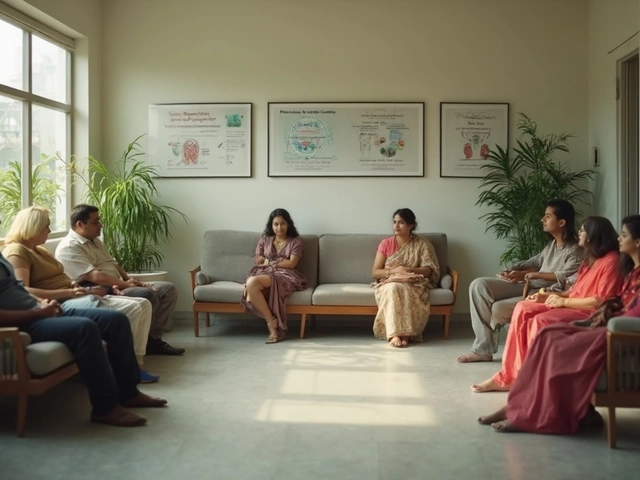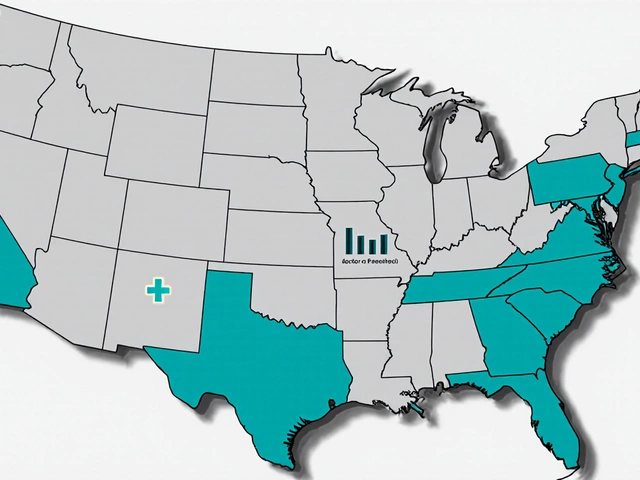Think your state has the best hospitals? The truth might surprise you. Every year, healthcare rankings spark debate—especially when your home state gets snubbed. But digging into the cold, hard numbers, one state almost always tops the lists: Massachusetts. It’s not just about the biggest hospitals or highest rates of insurance. The race for #1 is more brutal than people realize, with fierce competition, sometimes flawed scoring, and sudden policy changes shaking things up. But let’s get honest: What does it really mean to say a state leads in healthcare? And more importantly, what can everyone else actually learn from it?
How Rankings Are Decided: More Than Just Fancy Hospitals
These rankings aren’t pulled out of thin air. U.S. News & World Report, Commonwealth Fund, and WalletHub crank out detailed state-vs-state charts year after year. They’re not just counting how many MRI machines a hospital has, but look at dozens of factors: access to care, patient outcomes, affordability, insurance rates, preventive medicine, and serious inequalities. For some rankings, they even factor in issues like obesity rates, vaccination coverage, and avoidable hospital admissions. It’s wild how a couple percent change in smoking or childhood immunization can swing a state’s position.
Let’s break down the points that count most:
- Access to Healthcare: Are doctors and clinics within easy reach? Wait times for appointments matter a lot here.
- Quality of Care: How many patients survive major illnesses, or avoid unnecessary readmissions? Do people get effective, timely treatment—or stuck in insurance red tape?
- Public Health: Are people healthier? Lower rates of preventable disease, high childhood vaccination, good mental health stats—all add up.
- Cost & Affordability: Are folks skipping checkups because they can’t afford them? This decides whether access is real or just on paper.
One huge surprise: Even if a state has world-famous hospitals, they don’t automatically hit #1. Consistency matters—good health for everyone, not just people in big cities or near teaching hospitals. And let’s not forget: data often lags. So, the #1 state today might have made those gains years ago, thanks to changes that took time to show results.
Massachusetts: Why It’s the Top State for Healthcare
You want specifics? Massachusetts has topped multiple major health rankings for five straight years. U.S. News & World Report called it #1 in 2023 and 2024, and WalletHub crowned it for overall healthcare quality in 2024. It’s a state that sets the bar on pretty much every scorecard—and it’s not an accident.
First, let’s talk insurance. Massachusetts has the highest rate of insured residents (over 97%), thanks to its pioneering health reform law in 2006—nicknamed “Romneycare” after then-Governor Mitt Romney. That law required nearly everyone to carry health insurance, years before the Affordable Care Act went national. So, more people can get care when they need it, without fear of crushing medical debt.
But the magic isn’t just in coverage. Massachusetts packs a crazy-high density of primary care doctors and specialists per capita, and public health spending per resident ranks near the top nationally. Hospitals? The state is home to icons like Massachusetts General and Brigham and Women’s, both among the best in the world. These aren’t just shiny buildings—studies show residents here survive heart attacks and strokes at slightly higher rates and are less likely to return to the hospital after surgery.
The Bay State also shines at keeping people healthy in the first place. Childhood vaccination rates top 94%. Routine cancer screening, like mammograms and colonoscopies, is nearly universal. As of 2024, only 1.5% of kids there were missing regular immunizations. Massachusetts has pioneered programs making preventive health easy and near-free for the average resident. Mental healthcare is stronger than elsewhere, with more clinics and more trained providers.
Let’s put the important numbers side by side:
| Health Metric (2024) | Massachusetts | National Average |
|---|---|---|
| Percent Insured | 97.1% | 91.2% |
| Hospital Readmission Rate | 13.4% | 16.5% |
| Primary Care Doctors per 10,000 | 7.8 | 5.5 |
| Immunization Rate (Children 19-35 months) | 94.1% | 87.7% |
| Mortality from Preventable Conditions (per 100,000) | 39.4 | 67.2 |
Massachusetts benefits from its tight size—nothing is ridiculously far, and the state pours more money into public health than most. Results show in cancer, diabetes, and newborn health numbers: lower rates of missed diagnoses, fewer babies born underweight, and higher survival for chronic illnesses. The system isn’t perfect—wait times can still get ugly in dense areas—but for now, everyone else is playing catch-up.

Underdogs and Runners-Up: Which States Are Closing In?
No one likes a one-horse race—so who’s giving Massachusetts a run for its money? Hawaii, Connecticut, and Minnesota consistently land just behind the leader. Let’s see how they stack up and why they could soon take the crown.
Hawaii is famous for its strong community health culture. The state recently reported just 9.6% of adults skipping care due to cost, one of America’s lowest. Hawaii’s mortality rate from preventable diseases hovers around 50 per 100,000, thanks to a focus on healthy living and universal insurance coverage for employees. Plus, Hawaii’s Prepaid Health Care Act requires employers to provide health insurance, so very few fall through the cracks.
Minnesota brings something different: rural access. Over 75% of rural residents there rate their healthcare as “excellent,” while most states still struggle to cover small towns. Clinics are spread out—on purpose—to cut down travel distances. Plus, the state’s nonprofit insurance plans have kept premiums more reasonable than you might expect. Minnesota’s chronic disease management programs have led to better than average diabetes and asthma control, saving millions in hospital costs every year.
Connecticut is less of a headline grabber but quietly scores off the charts for cancer survival, mental health, and maternal care. It sinks a ton of cash into public health outreach, covering everything from flu shots on street corners to school-based asthma care. The result: some of the lowest avoidable hospitalizations for kids in the Northeast.
Check out the comparison table:
| Health Metric (2024) | Hawaii | Minnesota | Connecticut |
|---|---|---|---|
| Percent Insured | 96.4% | 95.2% | 95.6% |
| Chronic Disease Mortality | 53.1 | 56.2 | 47.8 |
| Primary Care Access (Score out of 10) | 8.2 | 8.5 | 8.0 |
| Hospital Readmission Rate | 14.9% | 14.2% | 13.7% |
These states aren’t identical in strategy or demographics, but they are proof that different approaches can get real-world results. Turns out, copying one state’s policies isn’t a silver bullet—but adapting the mindset of putting coverage and access first can pay off anywhere.
What’s Holding Other States Back?
If some states are sprinting out ahead, why do others lag so far behind? The answer usually comes down to money, politics, geography, and creative solutions—or lack of them. If you look at states like Mississippi, Louisiana, Oklahoma, or Texas, you’ll spot a few repeat problems: low rates of insurance coverage, far-flung rural towns, less public health spending, and sometimes stiff resistance to Medicaid expansion.
Mississippi, for example, has just 87% of adults insured—10% fewer than Massachusetts. It ranks last for preventable hospitalizations and often makes headlines for closing hospitals in small towns, leaving thousands with nobody nearby when disaster hits. The result? Outcomes for things like heart attacks are measurably worse. Louisiana faces similar hurdles: long travel to see a doctor, high rates of diabetes and hypertension, and limited access to specialists. These factors build on each other, and tragically, the gaps have proven hard to close, even with bursts of extra funding.
Texas is an outlier in another way. Despite massive cities and shiny medical centers, Texas has double-digit uninsured rates—over 17% of adults under 65. Many skip checkups or let minor problems snowball until emergency rooms are their only option. And when people can’t afford care, problems like cervical cancer or untreated depression spike.
What can these states change? Turns out, targeted fixes—like expanding Medicaid, funding mobile health units for rural areas, or boosting nurse practitioners in primary care—help turn the tide. Oklahoma, for example, saw its uninsured rate drop by 10% in two years after expanding Medicaid in 2021. But it’s still behind in other areas like health literacy and preventive screening. It’s rarely a quick fix—real change needs steady effort and smart investment.

How Can You Benefit—Even If You Don’t Live in the #1 State?
Here’s the big question: If you aren’t moving to Massachusetts next month, what can you actually do? Truth is, anyone can steal a few of the best ideas and habits from the top states, no matter where you live. Here are tips that translate nationwide:
- Stay Insured, Any Way You Can: Even a basic plan protects you from financial disaster. Can’t get coverage through work? Check your state’s options—many offer free or discounted programs you might not realize exist.
- Use Preventive Services: Go for annual wellness exams, routine blood work, vaccinations, dental cleanings, and screenings. The data is crystal clear—states with higher screening rates spot problems before they get serious.
- Find a Primary Care Provider: Having a go-to doctor or nurse makes everything easier, from medication renewals to fast referrals when you get sick.
- Tap Into Local Health Programs: States and counties run free clinics, mental health hotlines, mobile testing vans, and even virtual care for those who can’t travel. Find out what’s local to you—you’d be shocked what’s available.
- Make Your Voice Heard: Contact local lawmakers, school boards, and hospital administrators. Stuff like adding urgent care locations or funding for community health workers has happened because regular people spoke up.
- Share Knowledge: Get the word out about low-cost insurance plans or free screening events. Sometimes the big missing ingredient is just getting people in the door.
Don’t brush off telehealth, either. Since the pandemic, virtual care visits shot up over 50% in states that made it easy to use. Turns out, just logging onto a video call catches conditions early and keeps people healthier—another tip borrowed from the top 5 states.
At the end of the day, location plays a part, but making the most of what you’ve got counts more. It’s not about chasing perfection or expecting luxury care overnight. Instead, it’s about steady improvements, speaking up for what works, and—frankly—not giving up when things get tough. With some of these practical moves, you can snag the same benefits, no matter if you’re in Cambridge or the middle of Kentucky.





